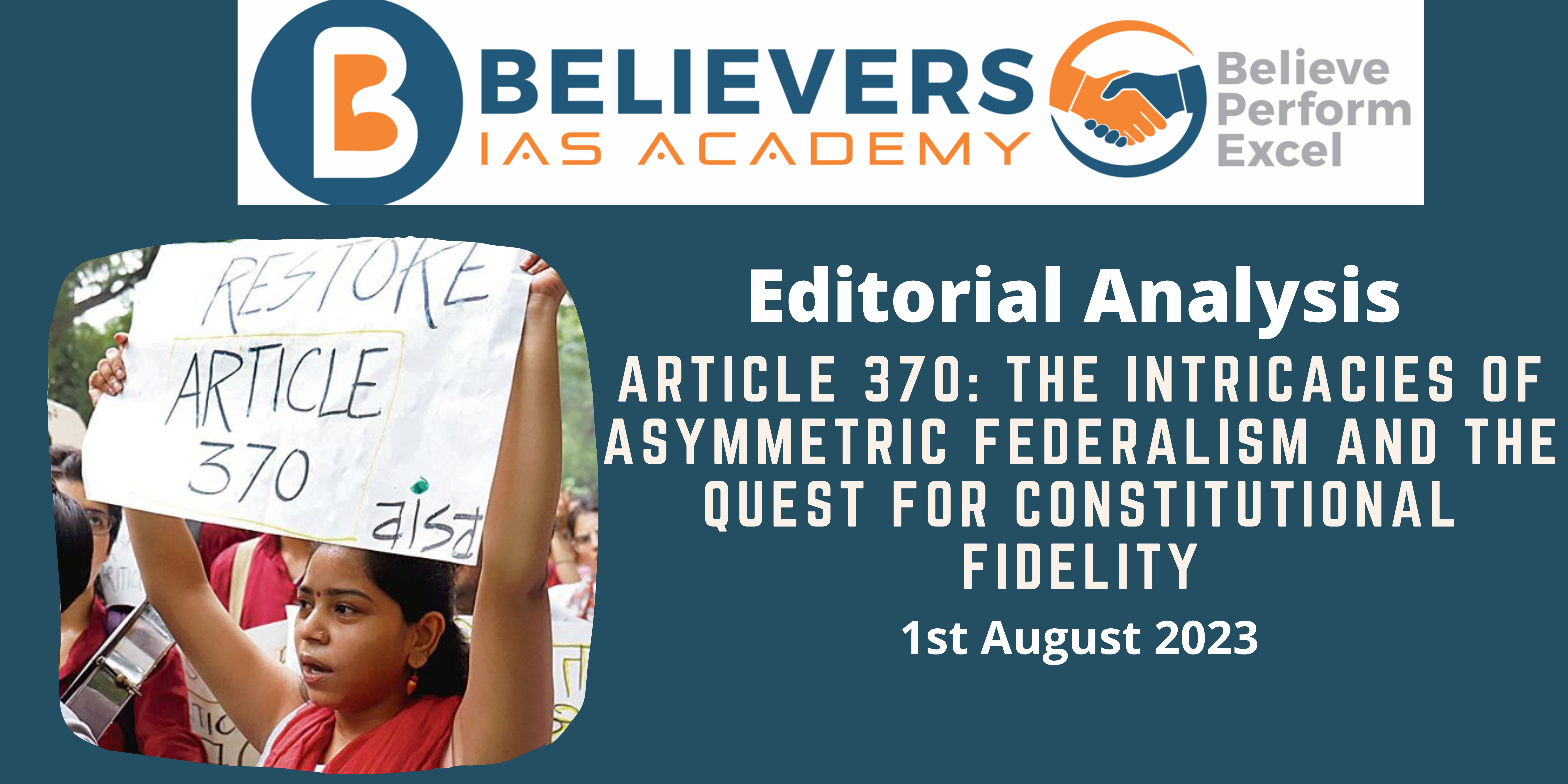Article 370: The Intricacies of Asymmetric Federalism and the Quest for Constitutional Fidelity
Context:
As the Supreme Court of India gears up for oral arguments commencing on August 2, a significant case concerning Article 370 of the Constitution takes center stage.
Relevance:
GS – 02 (Indian Constitution, Government Policies & Intervention, Federalism, Parliament)
Prelims:
- Article 370 and 35(A)
Mains Question:
- Discuss the implications of the amendments made to Article 370 of the Indian Constitution and their impact on the relationship between the Union and States, with reference to the concept of asymmetric federalism. (250 words)
Dimensions of the Article:
- An Instrument with Qualifications
- An Instrument with Qualifications
- Alterations via Article 367
- A Colorable Exercise of Power
- Asymmetric Federalism and Constitutional Values
An Instrument with Qualifications:
- The inception of India’s independent dominion under the Indian Independence Act, 1947, allowed the Government of India Act, 1935, to serve as an interim constitution until the nation adopted its own. In the case of J&K, the instrument of accession came with qualifications, which were later incorporated into Article 370.
- These caveats outlined that Parliament could legislate for J&K only on matters pertaining to external affairs, defense, and communications. For legislation beyond these agreed subjects, consultation with the State government was necessary. Additionally, enacting laws outside these subjects required ratification by the State’s Constituent Assembly.
The Conundrum of Article 370:
- The significance of Article 370 persisted even after J&K’s Constitution came into force in 1957, replacing the Constituent Assembly with a Legislative Assembly.
- The original drafter of Article 370, Gopalaswami Ayyangar, considered the State Constituent Assembly’s recommendation, mandated by clause (3) of Article 370, as a “condition precedent” for any attempt at abrogating the provision.
- However, with the dissolution of the Constituent Assembly, this clause lost its practical relevance. Consequently, Article 370 became the primary means of governance for J&K.
Alterations via Article 367:
- When changes were proposed to modify this arrangement, the Union government faced limitations within the existing text of Article 370. Turning to Article 367, situated in Part XIX of the Constitution, which contains general rules for interpreting the Constitution, the government found its solution.
- The President’s order on August 5, 2019, added a new clause to Article 367, redefining “Constituent Assembly of the State” to refer to the “Legislative Assembly of the State” wherever mentioned in Article 370. This seemingly minor alteration had profound consequences, effectively abrogating the essence of Article 370 without adhering to the conditions Ayyangar deemed necessary.
A Colorable Exercise of Power:
- The repercussions of these actions are significant. While J&K was under President’s Rule, the Governor not only assumed the role of the State’s Legislative Assembly but also acted as its Constituent Assembly.
- Building on this authority, the President declared under Article 370(3) that all clauses of the said article would cease to be operative from August 6, 2019, and that all provisions of the Indian Constitution would apply to J&K.
- The President’s order asserts that it was made with the “government of the state of Jammu and Kashmir’s” concurrence. However, with the State under President’s Rule, this concurrence came from J&K’s Governor.
- Thus, the Union government essentially assented to its own decision, without consulting or securing agreement from the State’s democratically elected representatives—a move deemed as a colorable exercise of power by petitioners in the Supreme Court.
Asymmetric Federalism and Constitutional Values:
- India’s Constitution establishes a system of governance with a division of power and authority between the Union and the States, reflecting a form of asymmetric federalism.
- This balance represents a fundamental aspect of the Constitution, and the Supreme Court must consider not just the original version of Article 370 but also the spirit permeating the document’s basic structure.
Conclusion:
The impending Supreme Court decision on the legality of the changes made to Article 370 will have far-reaching implications. The case challenges the essence of representative democracy and asymmetric federalism in India. As the court proceedings unfold, the nation awaits a verdict that will shape the course of its constitutional governance.




